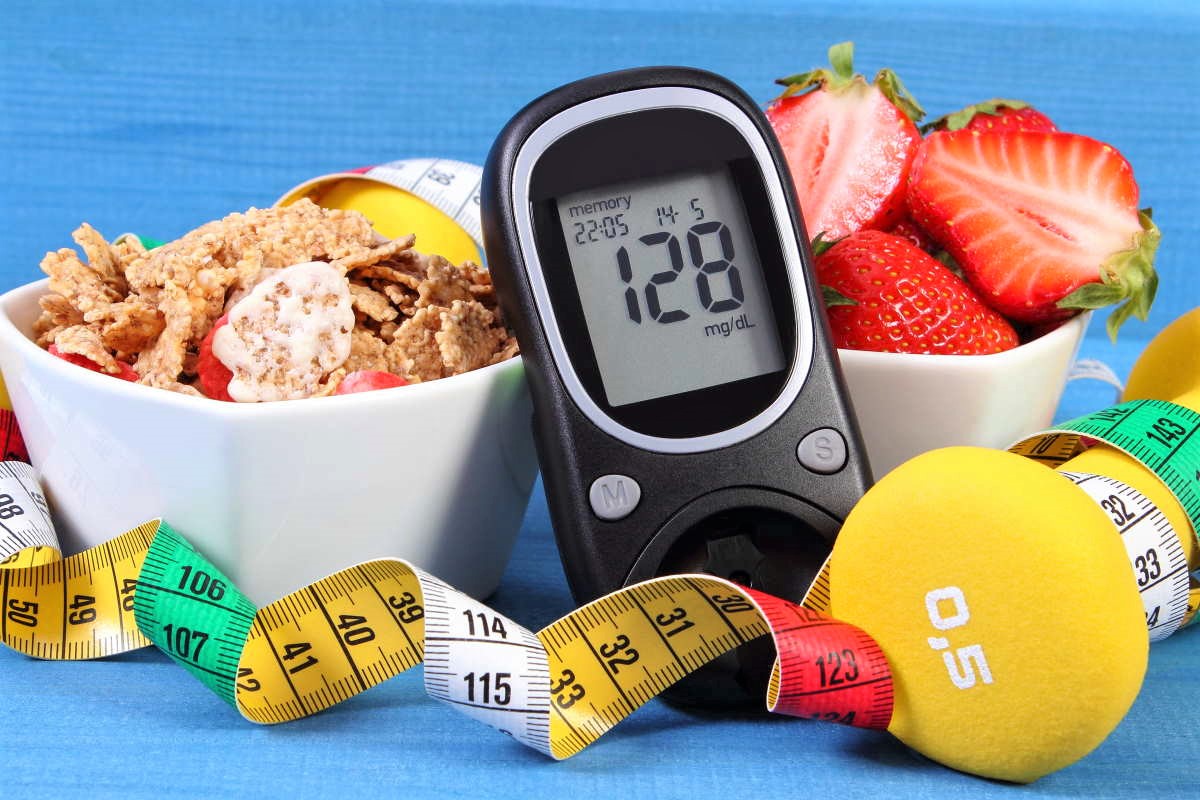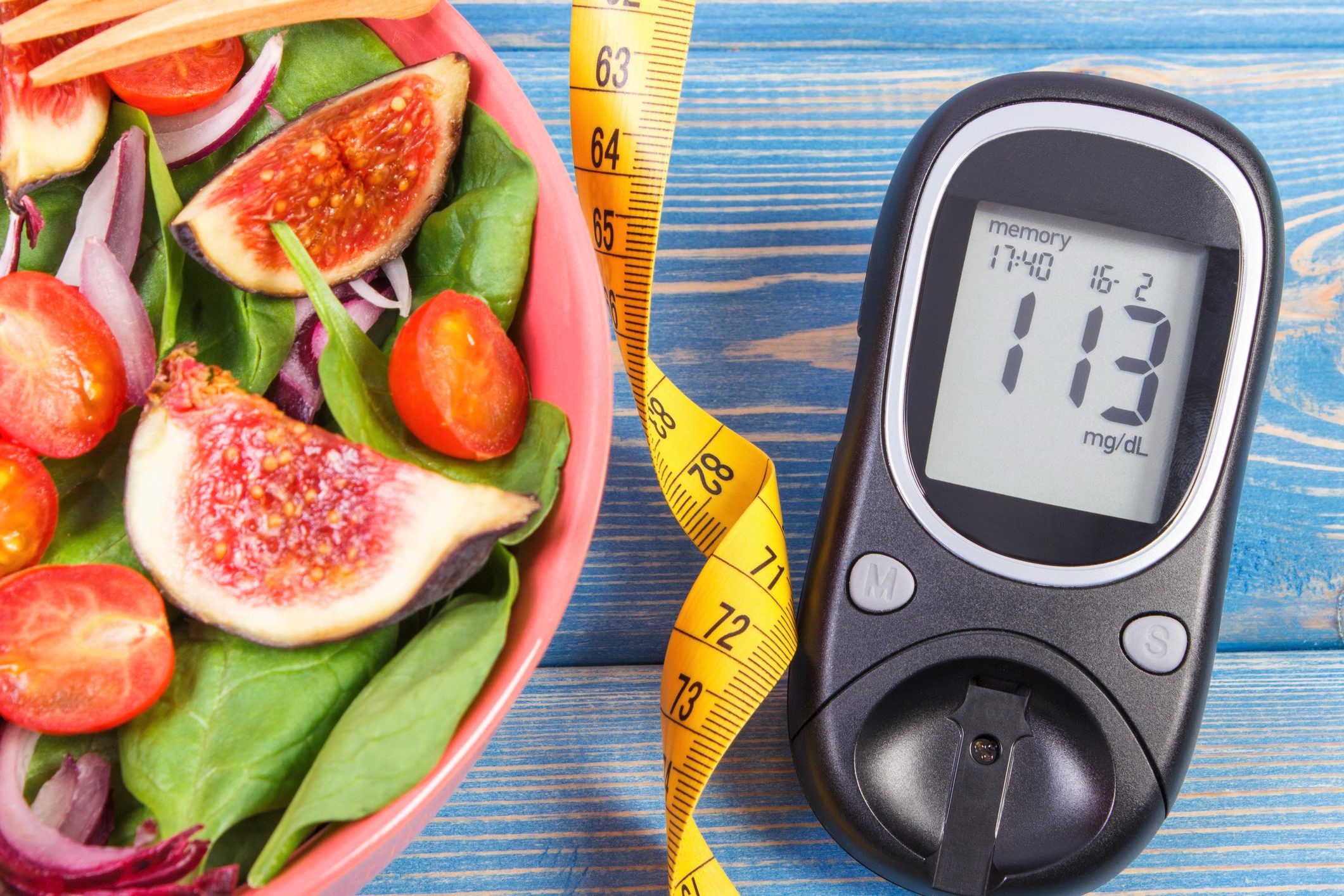
The diabetic diet: 3 false myths to dispel
In diabetics, diet is the main form of therapy, together with physical exercise (150′ minutes of walking per week or 10,000 steps per day – WHO), hypoglycaemic therapy (medication or insulin), glycaemic monitoring and therapeutic education
General recommendations for a balanced diet
A balanced diet in diabetic patients includes:
- carbohydrate quota between 45-60% of daily calories, especially carbohydrates rich in fibre and with a low glycaemic index;
- a limitation of simple sugars to 5-10%;
- 20-35% lipids;
- 10-25% protein.
Finally, fibre intake is essential.
Fibre from fruit, vegetables, legumes and cereals provides no calories, increases satiety (by filling the stomach, reinforcing chewing, facilitating intestinal transit and improving bacterial flora), and slows down and steadies the absorption of carbohydrates.
It is necessary to take about 30 grams/day in adults.
It is also important to stress that in addition to the quantity of food, attention should be paid to the quality and intra-day distribution of meals.
Pizza, sweets and strict diet: myths to dispel
Here are 3 false myths to dispel about diets for people suffering from diabetes:
1. Diabetics cannot eat pasta, bread, pizza and rice
Often, people tend to eliminate pasta, bread, rice and pizza from their diet when they have high blood sugar levels or diabetes.
Nothing could be further from the truth.
Sugars are the body’s direct source of energy and are mainly used by the main organs such as the brain, heart and muscles to carry out their main activities.
They are therefore important and should be an integral part of our diet.
The brain consumes about 120 g of glucose per day of the 200 g required daily by the entire body.
Although glucose is the only simple sugar (monosaccharide) able to cross the blood-brain barrier and therefore able to make our neurons ‘work’, this does not mean that we should overdo it with sweets!
Our bodies are able to obtain this sugar from the complex carbohydrates (starches) in pasta, bread, rice and potatoes.
If you have high blood sugar levels or diabetes, you should therefore prefer complex carbohydrates or starches that are absorbed slowly and do not cause a sudden rise in blood sugar levels.
Carbohydrates can be found in cereal products (pasta, rice, bread, baked goods), potatoes and legumes (beans, chickpeas, lentils, peas).
It is a good idea to reduce the intake of simple carbohydrates, which are rapidly assimilated and significantly raise blood sugar levels.
These sugars include those found in honey, jam, fruit (fructose and sucrose), but also in milk and yoghurt (lactose) or those added to sugary drinks.
The WHO recommends that free sugars should account for 10% of our daily energy intake.
Several EU countries recommend a maximum consumption of 25g of free sugars per day (or 5% of total energy intake); this corresponds to 6 teaspoons of table sugar.
2. Diabetics cannot eat sweets
There is not a single food that a person with diabetes cannot eat, including sweets.
Sweets are foods that should be eaten in moderation and in small quantities: once a week, one portion, at breakfast or at the end of lunch instead of fruit. This gives you the time you need to be ‘consumed/combusted’ throughout the day.
Moreover, at the end of a meal, the glycaemic rise is modulated by the absorption of other nutrients introduced with the diet. It should be noted that sweets should not be eaten far from a meal or late after dinner.
What to avoid
Sugary drinks are more problematic and should be avoided.
Their consumption is related to overweight and obesity, especially in children and adolescents.
Suffice it to say that
- those who consume 2 fruit juices a day increase their risk of developing diabetes;
- 1 sugary cocktail a day increases the risk of the disease by 20% (InterActConsortium 2013).
Finally, alcohol intake should be limited as the carbohydrates it contains can spike blood sugar levels and are often overlooked by diabetics.
Taken in conjunction with certain therapies (insulin), on an empty stomach or in the presence of organ failure (liver disease), alcohol can promote hypoglycaemia by interfering with glycogen release.
The same applies to sweetened drinks, which have no calories, but perpetuate the habit of sweetness and generate a biochemical and biological response that encourages weight gain.
3. The person with diabetes must always be on a diet
Controlling one’s body weight is essential to obtain and maintain a good glycemic balance and to avoid the development of complications.
In order to do so, one should not adopt drastic or inappropriate diets, which are impossible to follow.
For a limited period of time and with the sole aim of weight loss, special diets can be followed under strict medical and dietary supervision.
Do-it-yourself diets or diets devised by unqualified people (relatives, friends, neighbours) are not at all recommended.
Diabetes is a serious, multi-organ disease that can lead to serious damage to various systems or dysfunctions, also due to inappropriate or incorrect dietary measures.
It is advisable to follow a reasonable diet that can be applied regularly throughout one’s life: a little less pasta, a little less bread, fish and legumes as an alternative to meat, little cheese and cold cuts, lots of vegetables, always fruit, very few sweets.
Mediterranean diet and diabetes
The best diet is still the Mediterranean diet, balanced from a nutritional point of view, complete, rich in fibre from vegetables, fruit and whole grains and low in animal fats.
It is a diet that is able to
- reduce major cardiovascular events
- reduce the incidence of diabetes by 52%.
The consumption of fish, especially blue fish, should be encouraged 2-3 times a week for its Omega3 contribution and moderate quantities of seeds and nuts for Omega6.
Green light to all vegetables: leafy greens such as salads, chard, spinach, chicory, root vegetables, carrots, beetroot, turnips, broccoli, fennel, Savoy cabbage and cabbage.
Legumes and vegetables, as well as providing vitamins, minerals and fibre, help to increase satiety in the face of low calorie intake.
The importance of not underestimating diabetes
Not being aware of the seriousness and potential severity of diabetic disease is the main problem.
Diabetes should not be neglected or underestimated, as it cannot be considered a trivial disease.
The lack or scarcity of symptoms, both at the onset and during the course of the disease, can only give rise to the presumption.
In fact, diabetes is very often diagnosed 7-8 years late or at the same time as some of its complications.
The absence of a real symptom or the presence of mild, negligible symptoms, or symptoms that are not adequately understood or correlated to diabetes, even in the presence of poor compensation, are the real Achilles’ heel of the person with diabetes.
Diabetes is a potentially serious disease that requires great awareness and maximum application on the part of the person affected, who must also be supported by a care team.
Unlike most diseases, diabetes cannot be treated by one doctor alone, but requires a multidisciplinary teamwork (diabetologist, cardiologist, vascular specialist, ophthalmologist, nephrologist, dietician, etc).
The diabetic patient must be an ‘active patient’, aware of his or her disease; encouraged and supported by the professionals who follow them, he or she remains at the centre of his or her own care pathway.
Read Also:
Emergency Live Even More…Live: Download The New Free App Of Your Newspaper For IOS And Android
Covid, Type 1 Diabetes Increasing Among Cured Minors
Type 2 Diabetes: New Drugs For A Personalised Treatment Approach



